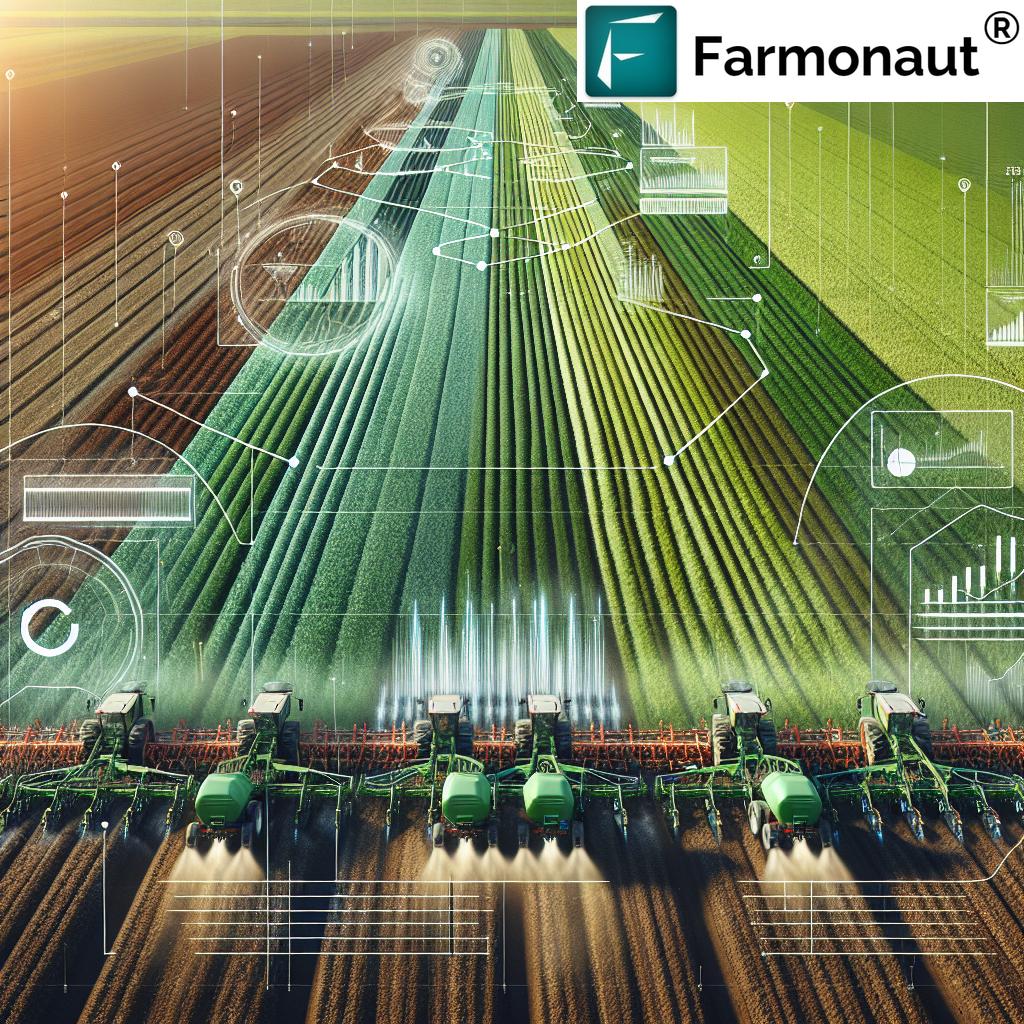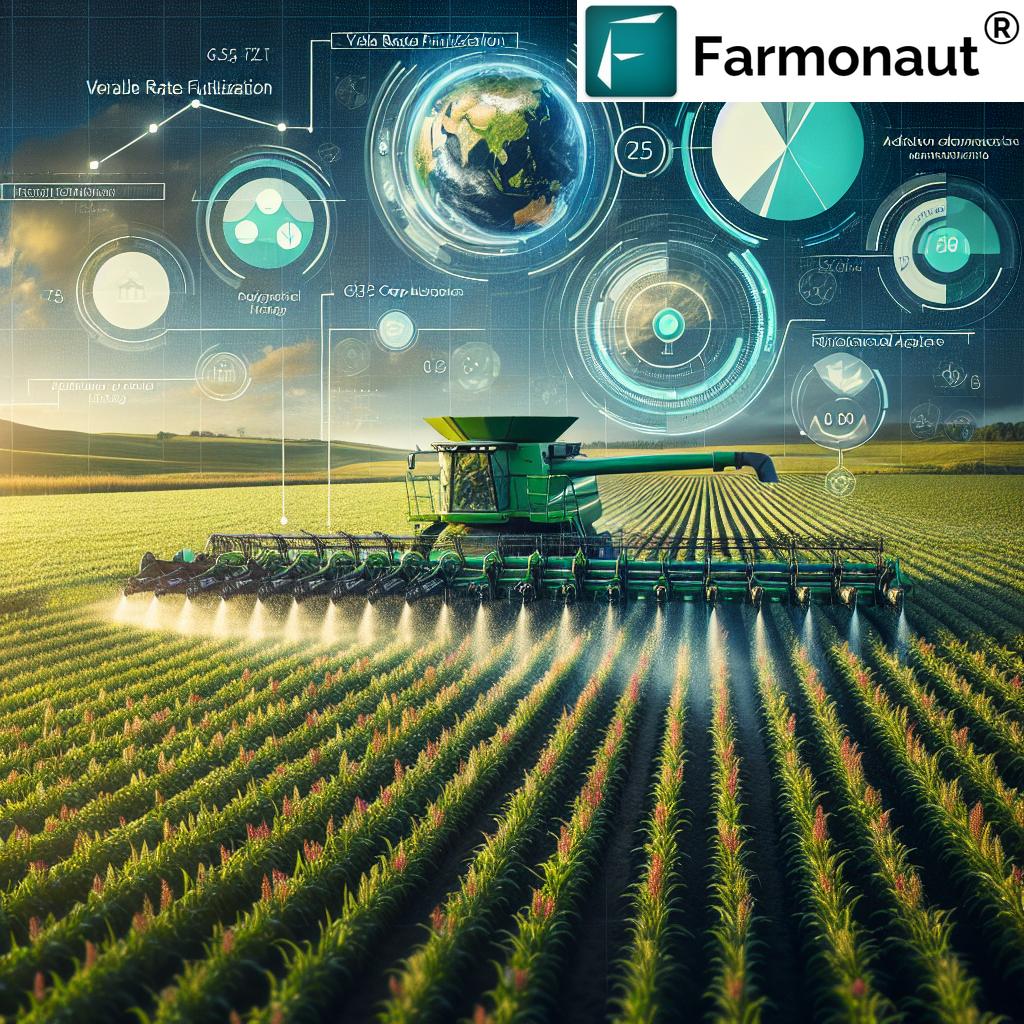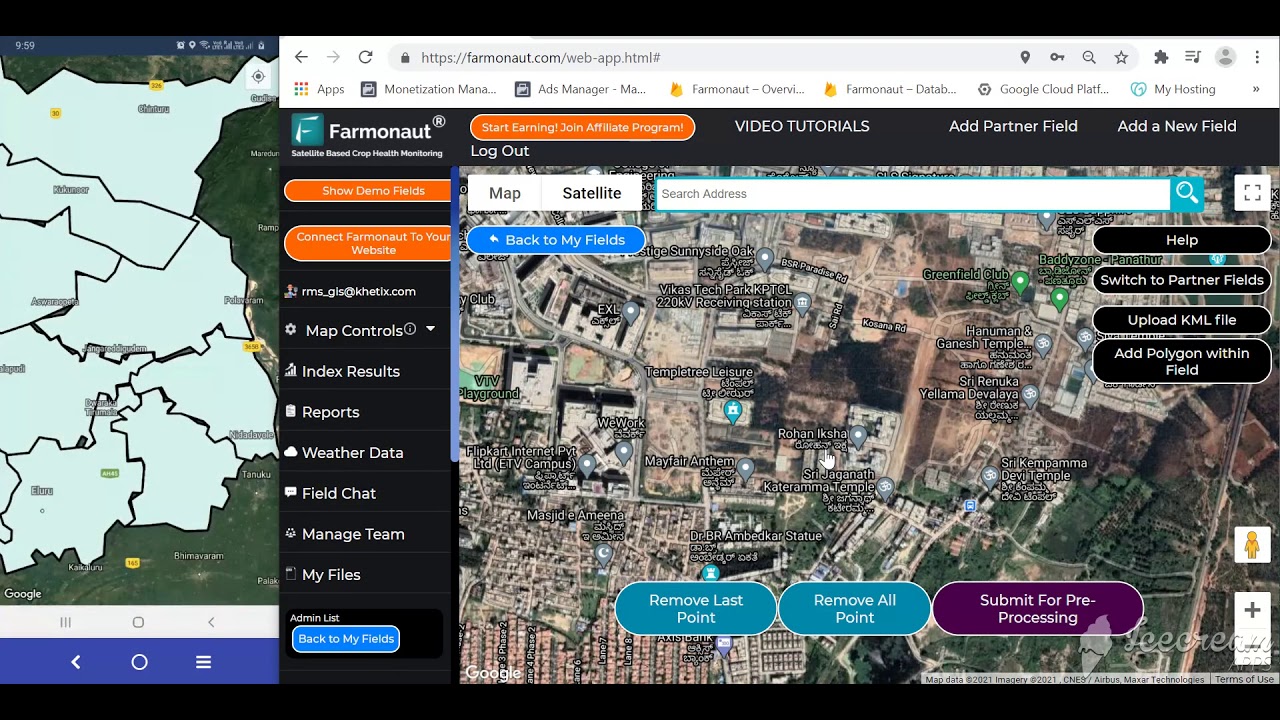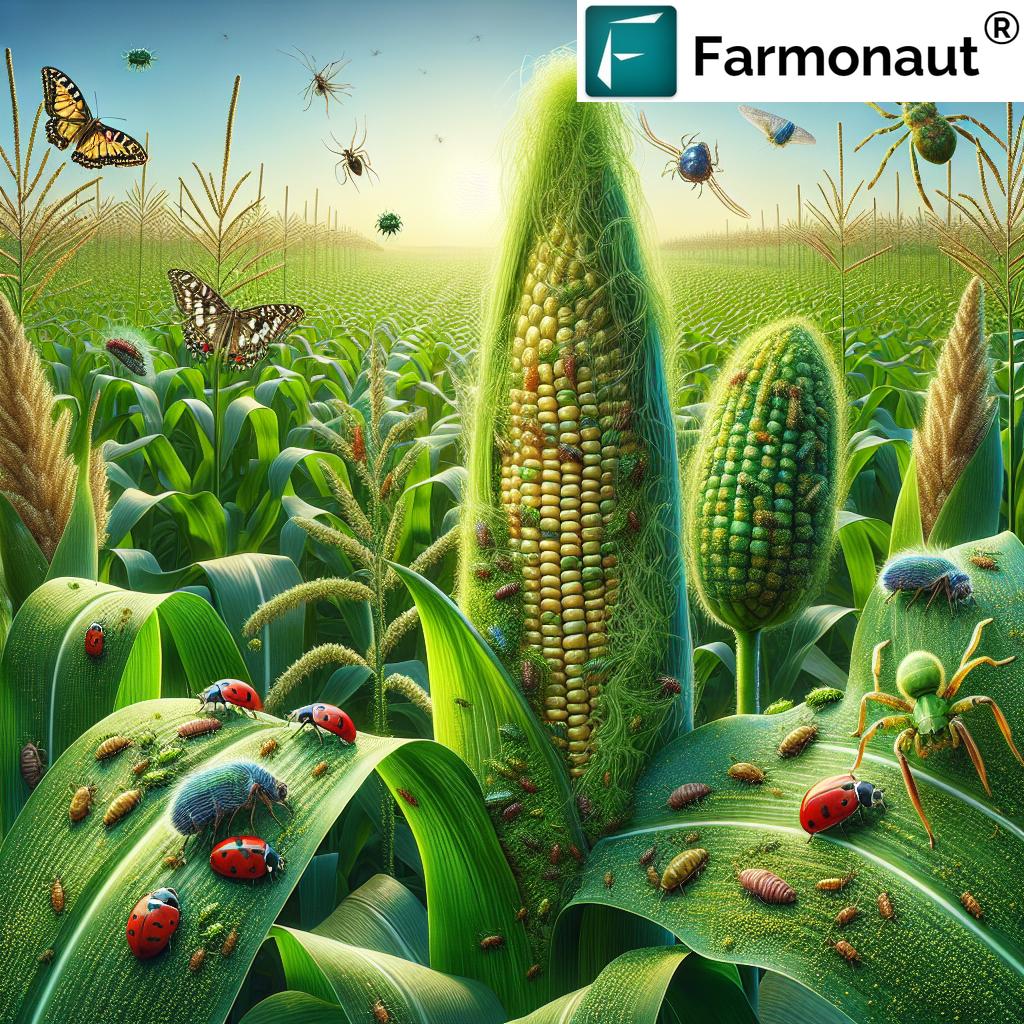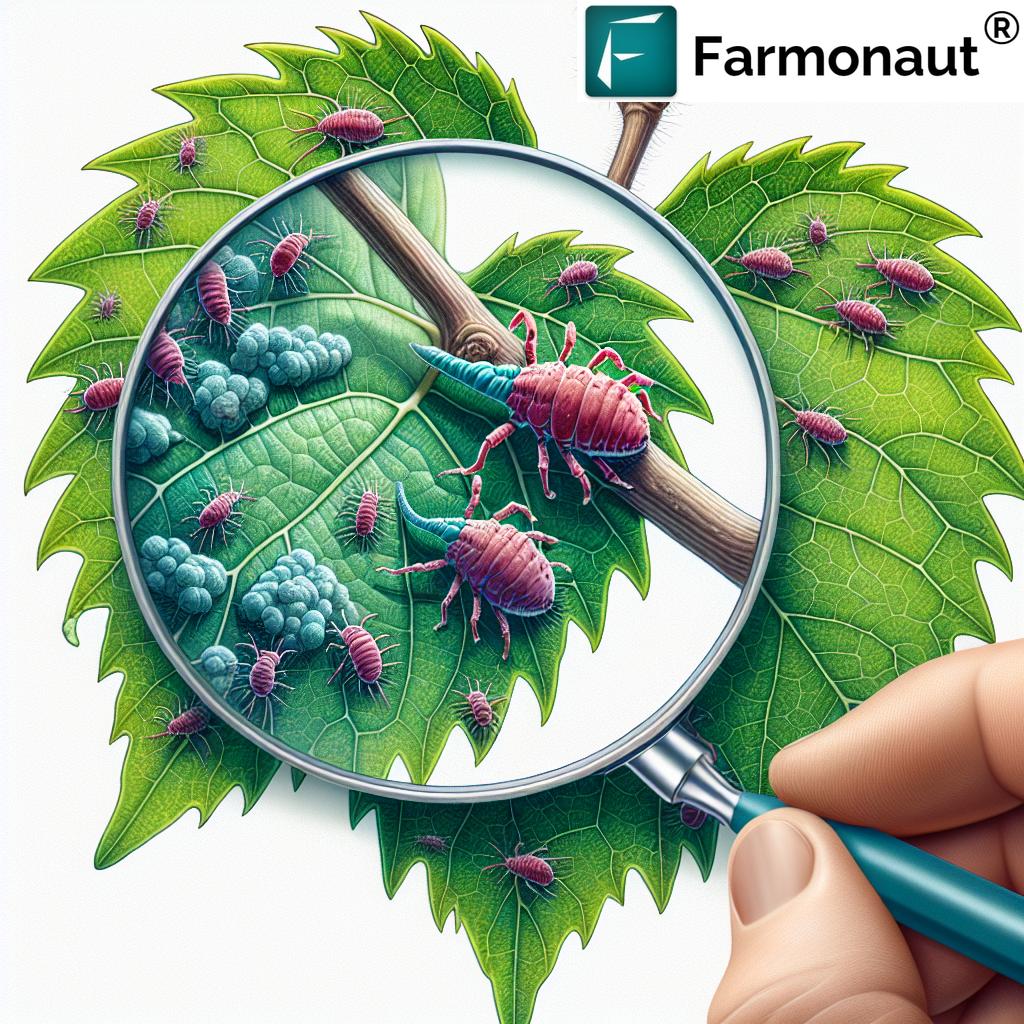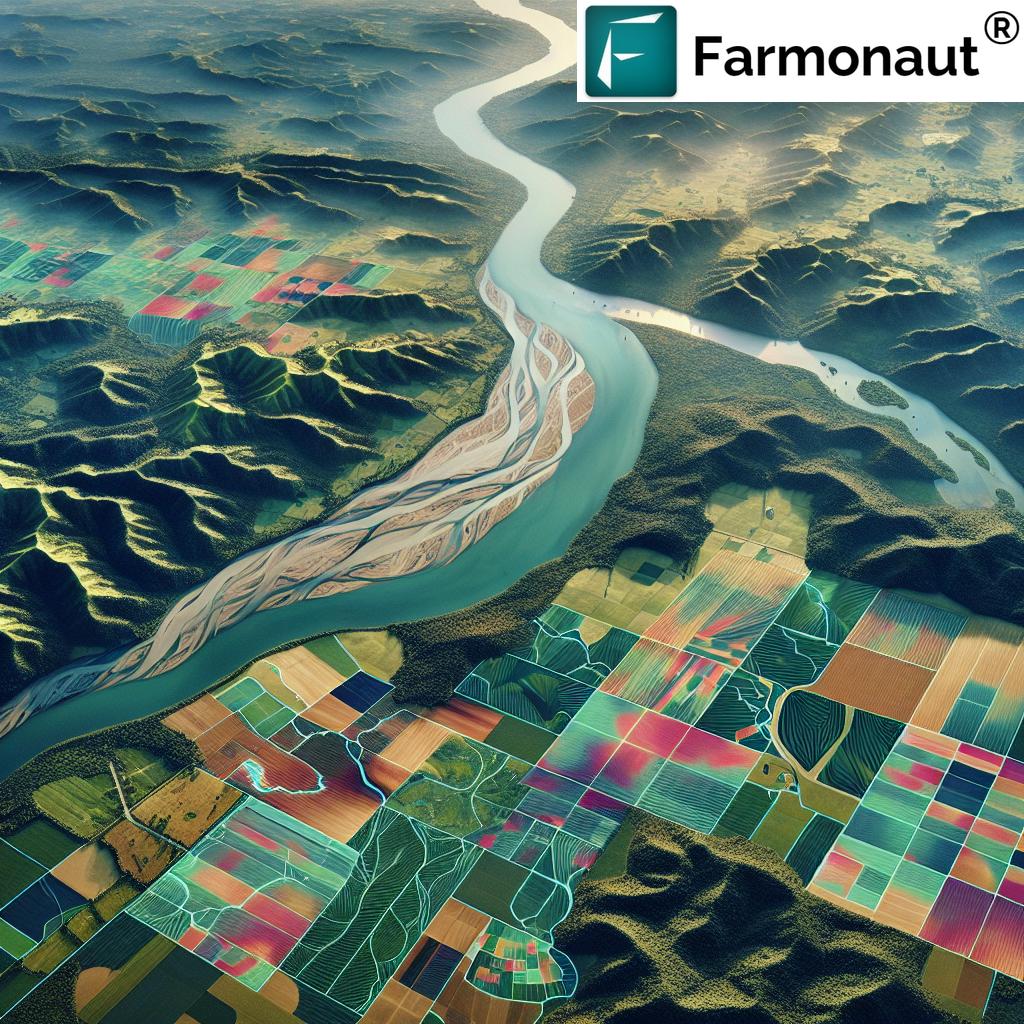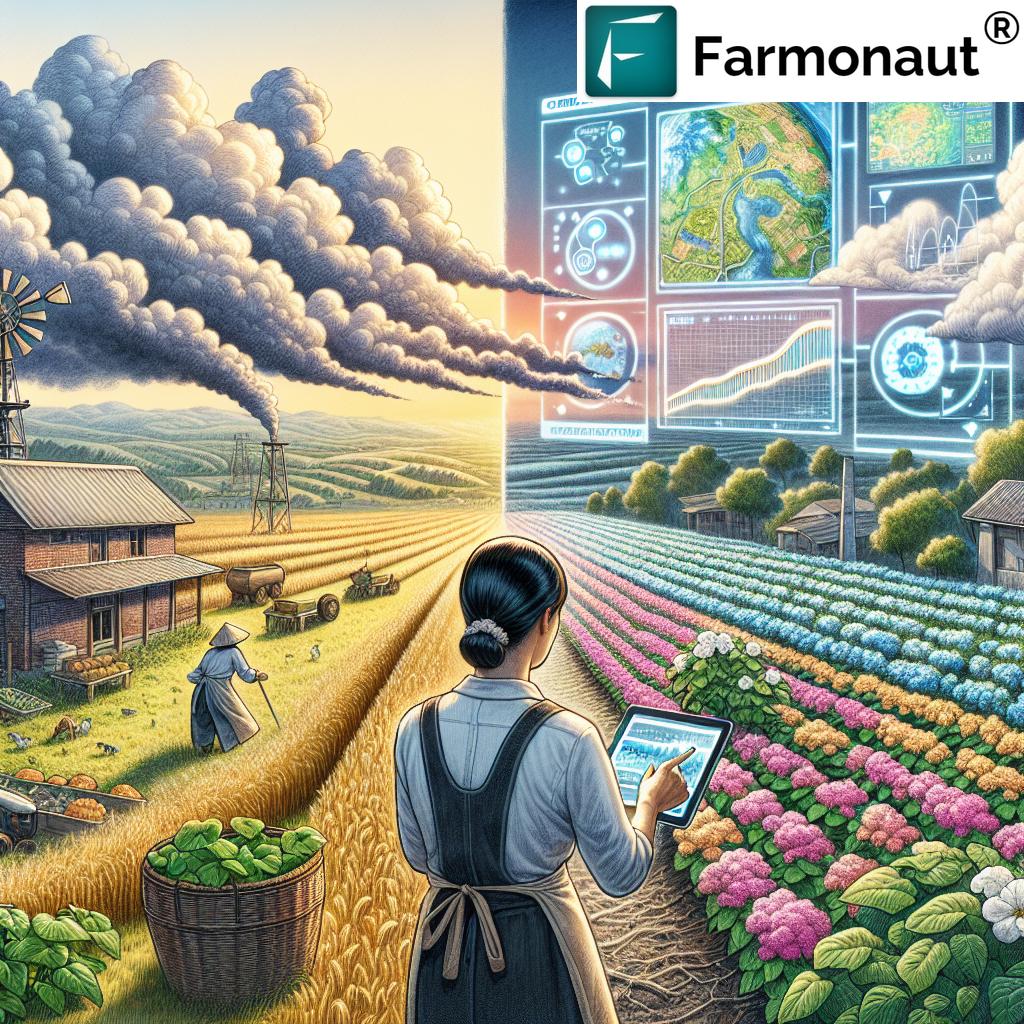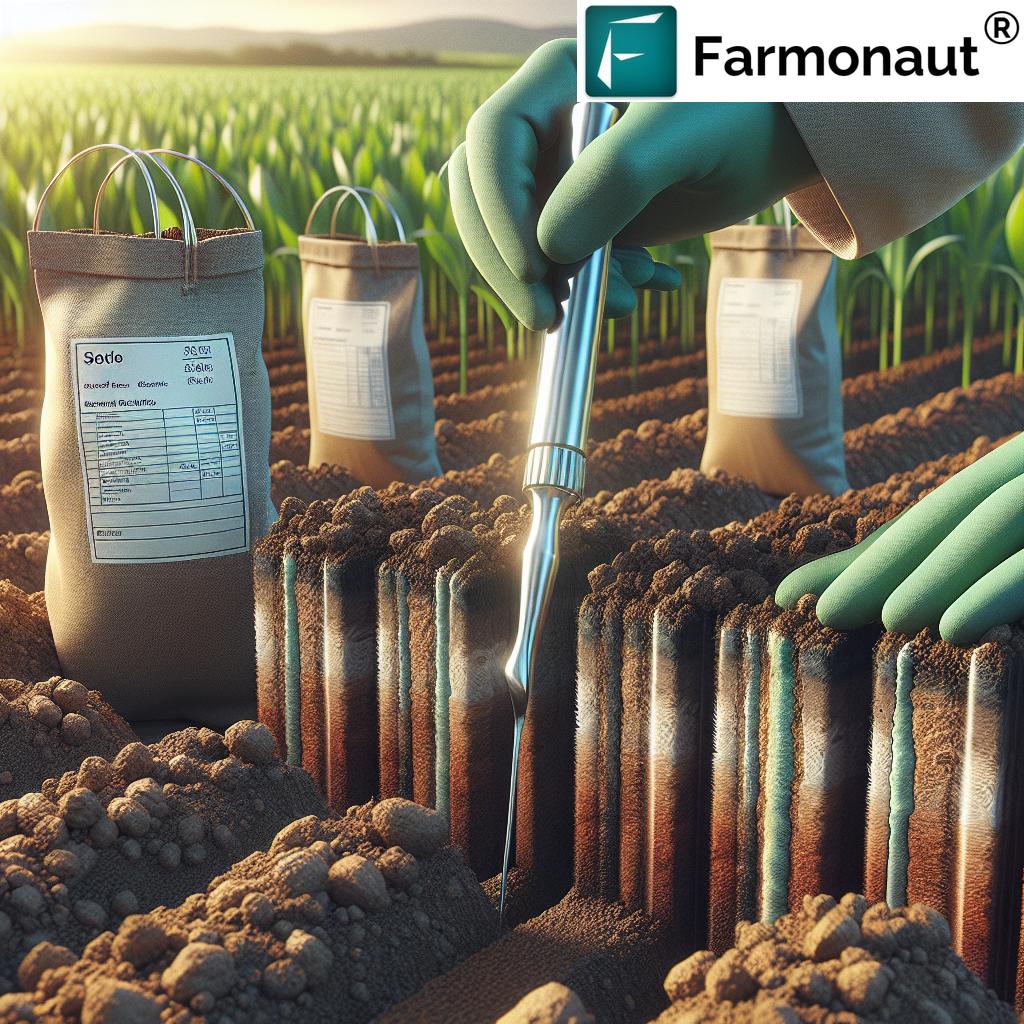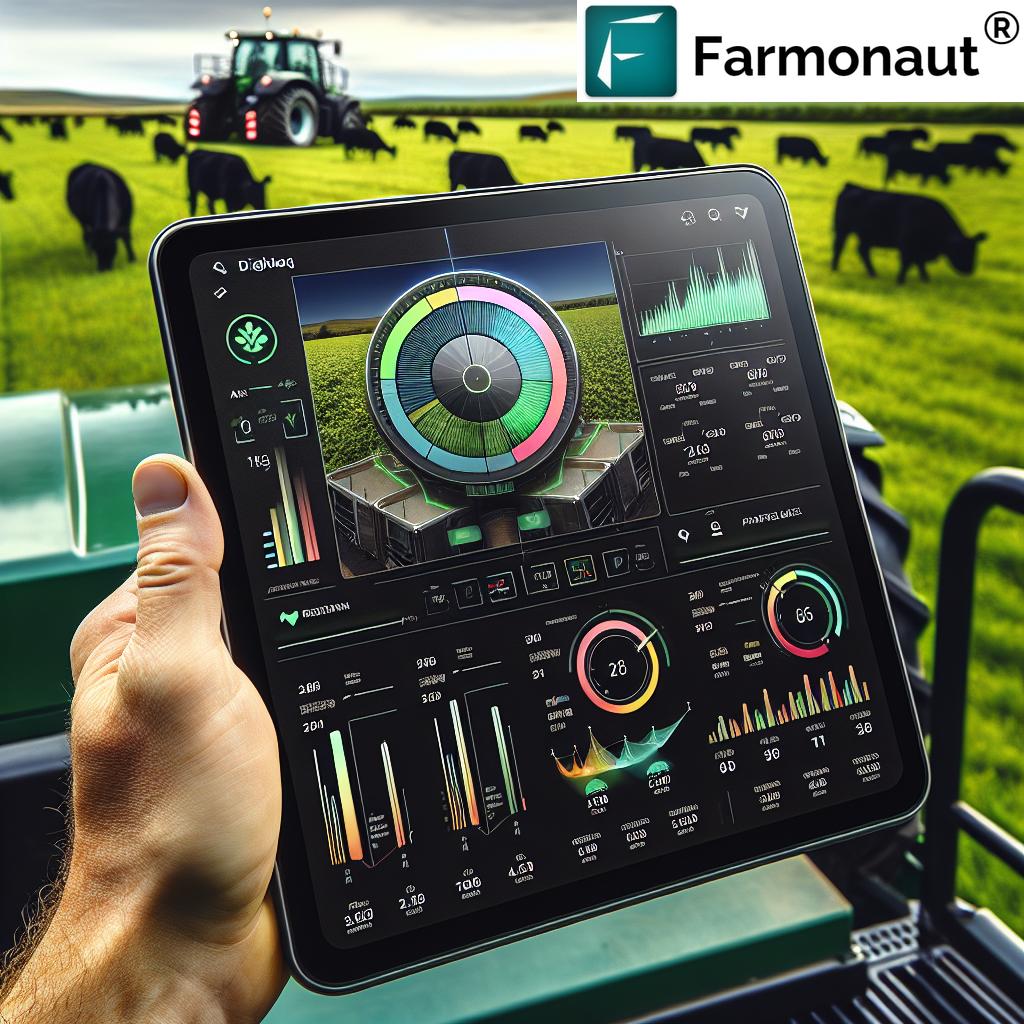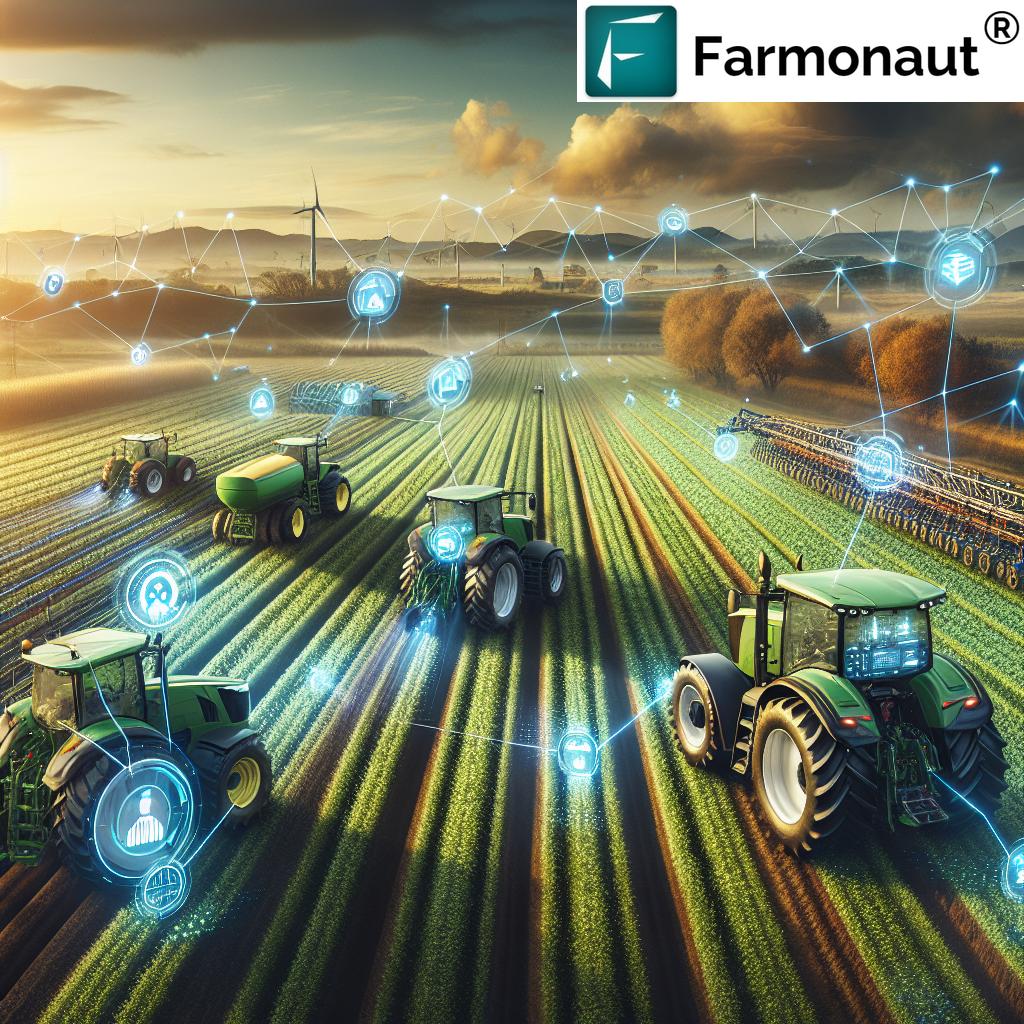Variable Rate Technology Benefits in Agriculture: Top Gains
Table of Contents
- Understanding Variable Rate Technology
- Key Benefits of Variable Rate Technology
- Comparison Table: VRT vs. Traditional Practices
- Applications of Variable Rate Technology
- How Farmonaut Makes Precision Agriculture Accessible
- Challenges in Adopting Variable Rate Technology
- Future Outlook: The Next Era of Data-Driven Agriculture
- FAQ
- Conclusion
- Subscribe to Farmonaut
“VRT can increase crop yields by up to 15% by precisely matching input rates to field variability.”
In the ever-evolving world of modern agriculture, Variable Rate Technology (VRT) has emerged as a game-changer, reshaping how we, as farmers and agri-professionals, manage our fields. By harnessing the power of data-driven agriculture, GIS mapping, and innovative precision agriculture platforms, VRT equips us with the ability to apply crucial inputs like fertilizers, seeds, water, and pesticides at rates that exactly match the unique needs of every part of our fields.
No longer must we treat our farmlands as uniform plots—VRT recognizes the natural variability in soil, moisture, and crop requirements, enabling tailored management. This approach not only boosts yields and farm profitability, but also dramatically advances environmental sustainability in farming. Let’s dive into what makes VRT such a transformative force, and how solutions like Farmonaut are making these powerful tools accessible across the global agricultural landscape.
Understanding Variable Rate Technology (VRT) in Precision Agriculture
Variable Rate Technology (VRT) is at the core of precision agriculture. It empowers us to move beyond traditional single-rate applications and enables a truly tailored approach. Utilizing real-time data, historical yield records, and advanced sensing equipment, we can fine-tune every field operation—from fertilizer application to variable rate seeding—to precisely fit our land’s needs.
Let’s break down the core systems that power VRT:
Map-Based Variable Rate Technology Systems
- Prescription Maps: These are generated using satellite imagery, drone surveys, soil samples, and historical yield data. Using Geographic Information Systems (GIS) software, we analyze layered data to create detailed application maps.
- Targeted Applications: These maps direct our machinery and equipment to apply varying rates of inputs—like seeds, fertilizers, and more—across the field based on actual soil and crop requirements.
- Data Integration: By incorporating both satellite and drone imagery alongside manual soil samples and in-field sensor data, we can achieve a granular and holistic perspective on field variability.
Sensor-Based Variable Rate Technology Systems
- Real-Time Sensing: Here, sensors are mounted directly onto our machinery, collecting live data as we traverse the field.
- Dynamic Adjustment: As the equipment moves, it instantly processes soil moisture, nutrient levels, and crop health, automatically adjusting the input rates on the fly—without needing pre-planned maps.
- Flexible Operations: This is especially valuable for variable conditions like unexpected moisture zones or pest outbreaks, allowing immediate, site-specific responses.
Both approaches—whether map-based or sensor-based—rely on the principle of matching input application rates with the actual requirements of distinct field environments. This flexibility is what gives VRT such a critical edge in modern agriculture.
Key Benefits of Variable Rate Technology in Agriculture
“Farmers using VRT report fertilizer savings of 10-20%, reducing costs and environmental impact significantly.”
Embracing variable rate application delivers a cascade of measurable gains for both our operations and the world around us. Here are the top ways VRT benefits agriculture:
1. Enhanced Resource Efficiency and Cost Savings
- Precision in input use means we apply only what’s necessary, where it’s necessary—cutting down on expensive fertilizers, pesticides, seeds, and water.
- In high-yield areas of our fields, seeding rates can be lowered by up to 18% (with no loss in soybean yield), and overall input utilization can be fine-tuned according to variable soil and moisture levels.
- Less waste equals more efficient operations and higher profitability for us.
2. Increased Yields and Crop Quality
- With nutrients matched to crop requirements and field conditions, our plants reach optimal health and maturity, resulting in higher yields and better quality.
- VRT supports crop yield optimization by fostering uniform emergence, enhanced vigor, and reduced competition among crops.
- Data-driven agriculture means decisions are supported by accurate, actionable information.
3. Environmental Sustainability in Farming
- Reducing over-application of fertilizers and pesticides protects our soil, water, and local ecosystems.
- Targeted applications mean less runoff into rivers and streams, lowering the risk of harmful nutrient leaching.
- With smart resource management, we cut down on greenhouse gas emissions associated with input production and use.
- Farmonaut’s carbon footprinting solutions provide real-time insights to monitor and reduce environmental impact.
4. Soil Health Management and Conservation
- Site-specific input application helps preserve the physical and chemical balance of our soil.
- By not overburdening zones with excess fertilizers or irrigation, we foster strong soil structure and support beneficial microbial life.
- This extends the productive lifespan of our land—ensuring future generations can also farm sustainably.
5. Improved Traceability and Data-Driven Decision Making
- VRT systems automatically collect and store data on every input and application within each field zone.
- Through blockchain-based traceability, we can ensure transparency throughout the farm-to-fork journey and facilitate compliance with food safety standards.
- Data-driven decision support enables us to fine-tune input prescriptions season after season, responding to changes in weather, crop health, and market needs.
6. Water Use Optimization through Variable Rate Irrigation (VRI)
- By adjusting irrigation rates based on real-time soil moisture data, we can optimize water use—a key concern in drought-prone regions.
- Farmonaut’s crop plantation and forest advisory tools integrate weather and soil moisture analytics to support efficient variable rate irrigation strategies.
7. Scalability and Efficient Management
- With satellite-guided VRT, we can monitor and manage everything from small plots to large agricultural enterprises—ensuring that efficiency advantages scale with us as we grow.
- Farmonaut supports large-scale farm management with advanced fleet and resource tools.
Comparison Table: Key Benefits of Variable Rate Technology (VRT) vs Traditional Practices
| Benefit Area | Traditional Practices (Estimated Values) |
VRT (Estimated Values) |
|---|---|---|
| Average Crop Yield Increase (%) | 0 – 2% | 6 – 15% |
| Fertilizer Use Reduction (%) | 0 – 5% | 10 – 20% |
| Estimated Input Cost Savings ($/hectare) | $0 – $25 | $40 – $80 |
| Reduction in Environmental Footprint (%) | 0 – 8% | 12 – 25% |
| Uniformity of Crop Emergence | Inconsistent | Consistently High |
| Record Keeping & Compliance | Manual, Prone to Error | Automated & Data-Driven |
Major Applications of Variable Rate Technology (VRT) in Modern Agriculture
The versatility of variable rate application can be harnessed at different stages throughout our agricultural cycle. Here’s a look at the leading use cases:
- Variable Rate Fertilization (VRF): Tailoring fertilizer application to soil nutrient levels and crop needs boosts input efficiency in agriculture and cuts environmental risk.
- Variable Rate Seeding (VRS): Adjusts seeding rates across the field to match moisture and soil fertility variations, maximizing germination and yield potential.
- Variable Rate Irrigation (VRI): Delivers optimal water to every zone. This prevents under- or over-irrigation, promoting soil health management and conservation.
- Variable Rate Crop Protection (VRC): Applies pesticides and herbicides only where truly needed, reducing overuse and minimizing chemical residue in the environment.
- When combined with blockchain traceability, VRT also enables secure tracking of input application histories for produce across the agriculture industry.
Find in-depth tools for resource-efficient farm management through Farmonaut’s full suite of products, such as fleet management and crop loan and insurance verification.
How Farmonaut Makes Precision Agriculture & VRT Accessible
As pioneers in satellite-based agricultural technology, we at Farmonaut believe that affordable, data-driven insights should be available to every farmer, everywhere. Our digital ecosystem—spanning Android, iOS, web, and API—places advanced resource management and field monitoring within reach, even for small and medium-sized landholders.
- Remote Crop Health Monitoring: Using multispectral satellite imagery, our platform detects in-field variability—like NDVI, moisture levels, and vegetation vigor—enabling variable input application for optimal yields.
- AI-Driven Decision Support: Our Jeevn AI advisory system combines real-time weather forecast data, soil health analytics, and dynamic field conditions, delivering tailored recommendations to improve crop productivity.
- Traceable Input Application: Blockchain-based traceability helps us record and verify every step in the input cycle—supporting food safety, market access, and input efficiency in agriculture.
- Smart Fleet & Asset Management: Tools for fleet tracking empower agribusiness operators to coordinate multiple machines and resources across large, complex sites where variable rate systems are used.
- Sustainability Analytics: Our carbon footprinting features enable us to measure, monitor, and improve on climate-smart farming goals.
- Accessible APIs: For technical users and agri-platforms, Farmonaut’s satellite data API and developer documentation enable integration of advanced VRT analytics directly into custom applications.
Whether optimizing seeding rates, monitoring soil health, or managing fleet operations, Farmonaut empowers us to leverage cutting-edge variable rate technology—without prohibitive costs or technical barriers.
Challenges in Adopting Variable Rate Technology
As with any transformative shift, adopting VRT and precision agriculture comes with practical hurdles. Understanding and addressing these ensures broader, more effective uptake:
1. High Initial Investment
- Purchasing VRT-enabled equipment, sensors, and software can be costly for smaller farms.
- Satellite and AI-driven solutions like Farmonaut help democratize access by offering affordable, subscription-based services—eliminating the need for expensive hardware upgrades.
2. Technical Complexity & Training
- Understanding data analysis, reading prescription maps, and managing GIS information can be daunting.
- We must invest in training and support services to empower farmers and farm managers.
3. Effective Data Management
- VRT’s success depends on accurate, timely data collection and analysis.
- Proper management of large datasets is vital—demanding robust digital infrastructure.
- Farmonaut’s cloud-based platform delivers strong data security with the flexibility needed for multi-user, multi-device operations.
4. Integration with Existing Practices
- Many traditional farming operations aren’t yet digitized or compatible with variable rate systems.
- Transitioning requires a mindset shift, careful planning, and stepwise adoption.
5. Access to Reliable Connectivity
- For real-time, cloud-driven decision support, stable internet access—even in rural fields—is necessary. Luckily, as digital infrastructure expands, this gap is narrowing each year.
Future Outlook: The Next Era of Variable Rate Technology in Agriculture
We are entering a golden era in modern agriculture—where artificial intelligence, machine learning, and the Internet of Things (IoT) will further evolve variable rate application:
- AI-powered recommendations: Auto-learning systems will continually refine input prescriptions for even more precise results based on aggregated field data and conditions.
- Continuous remote monitoring: Next-generation satellites and IoT devices will provide hyper-local, high-frequency data on everything from crop growth to microclimate conditions.
- Fully automated applications: Autonomous machinery is already on the rise, and will increasingly partner with VRT systems for 24/7 optimal input distribution.
- Traceability and transparency: With blockchain and mobile technology, delivering “farm-to-table” transparency—and ensuring compliance with regulatory and market demand—will become the norm.
- Boosted sustainability metrics: Environmental monitoring, carbon tracking, and carbon credit generation will align with global climate-smart agriculture initiatives.
The bottom line? Variable rate technology will form the backbone of a sustainable, productive, and resilient food system—powered by smart data, intuitive software, and cloud-based advisory platforms like Farmonaut.
Frequently Asked Questions: Variable Rate Technology in Agriculture
What is the main difference between variable rate technology and traditional uniform-rate application?
VRT applies inputs such as fertilizers, seeds, and pesticides at rates tailored to the specific needs of each field zone, whereas traditional methods use the same rate across the entire field, ignoring local variability. This makes VRT far more efficient and environmentally sustainable.
How does satellite imagery help implement VRT?
Satellite imagery—like that provided by Farmonaut—delivers detailed visual and analytical data (NDVI, soil moisture, etc.) that we use to create precise prescription maps for variable input application. These insights drive smarter, more targeted decisions.
Can small-scale farmers benefit from variable rate technology?
Yes! Thanks to affordable subscription-based platforms and smartphone-accessible solutions, even individual and smallholder farmers can leverage VRT through services like Farmonaut—no expensive hardware required.
What impact does VRT have on environmental sustainability in farming?
VRT reduces input wastage and runoff, thus preventing water pollution, preserving beneficial soil biology, lowering carbon and nitrogen emissions, and supporting long-term sustainable agriculture practices.
How can I start using VRT in my own operation?
Download the Farmonaut App on Android, iOS, or Web, and begin monitoring your fields with real-time, satellite-based insights. Explore fleet management, resource tracking, and more to unleash the full power of variable rate technology.
Is there API access for integrating VRT data into my farm management system?
Yes! Integrate advanced satellite and weather APIs directly through Farmonaut API. Check the developer documentation for setup guides and feature overviews.
Ready to Unlock the Power of Variable Rate Technology? Subscribe Now!
Farmonaut is committed to making precision agriculture accessible for all. With our range of plans, we cater to every scale—whether you manage a single plot or a multinational agricultural operation. Start optimizing your fields, inputs, and environmental outcomes today.
Conclusion: Achieve More with Variable Rate Technology and Farmonaut
Variable rate technology is no longer the future—it is the new standard for modern, sustainable, and profitable agriculture. By leveraging precision input management, real-time data, and robust digital ecosystems like Farmonaut, we can dramatically improve crop yields, optimize input use, and promote environmental sustainability in farming.
Whether our goal is crop yield optimization, resource efficiency, or compliance with environmental standards, VRT empowers us to make confident, evidence-based decisions—driving better outcomes for our business, our land, and our communities.
Now is the time to harness the full power of variable rate application through the tools and innovations at our fingertips. Let’s farm smarter, optimize our resources, and build a resilient agricultural future—together with Farmonaut.





